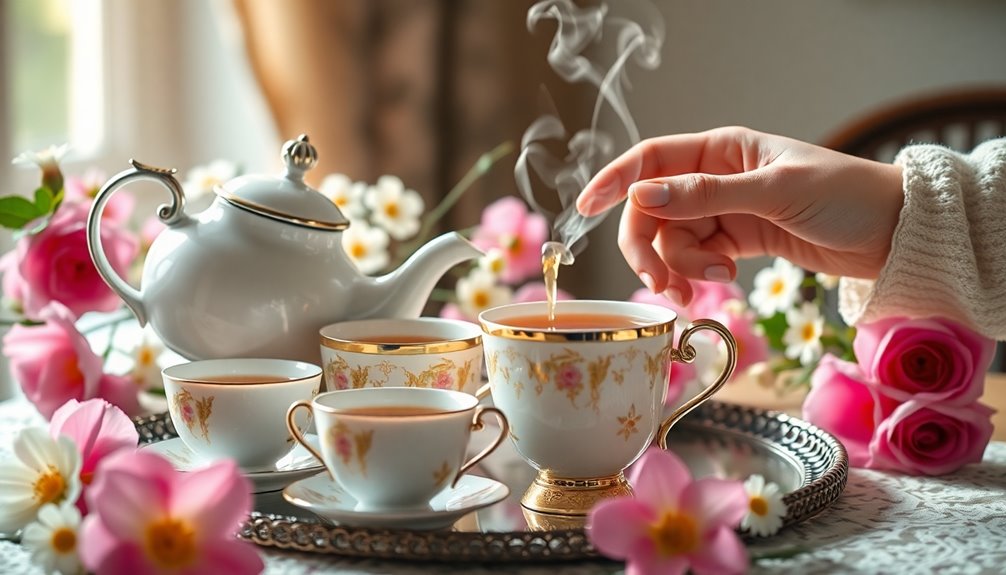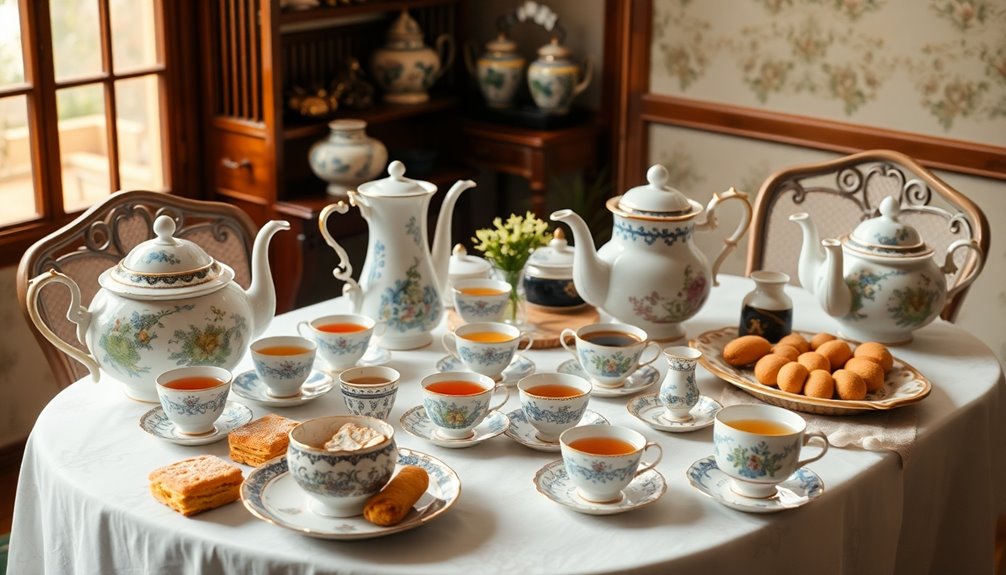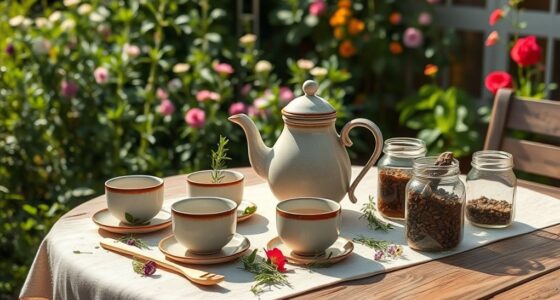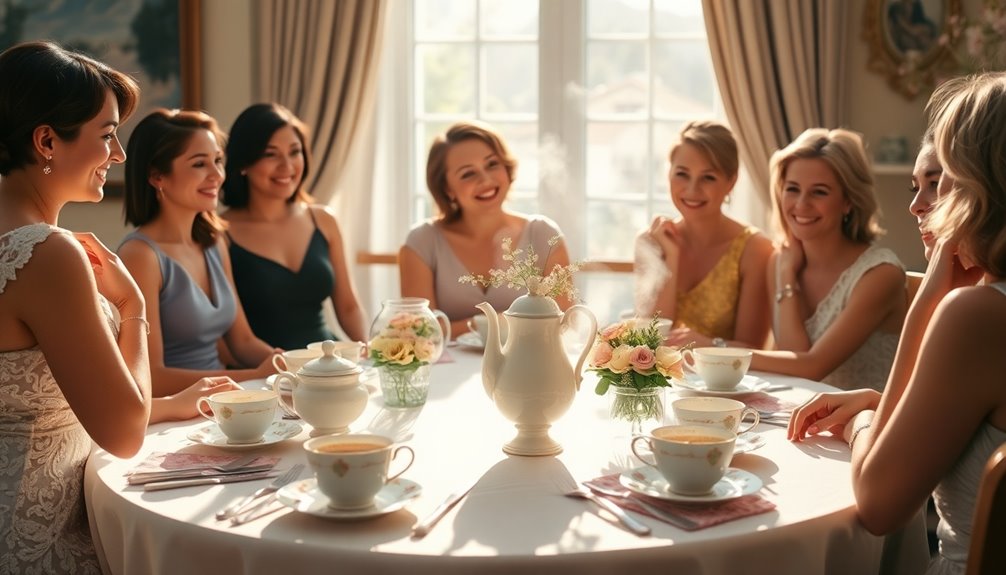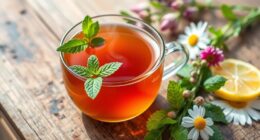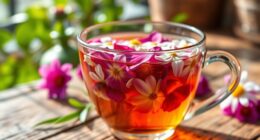Proper tea etiquette matters more than you might realize. It sets the tone for social interactions, showing respect for your guests and hosts. When you follow the established customs, you enhance the enjoyment of the gathering and create a welcoming atmosphere. Different cultures have their unique practices, from the British afternoon tea to the Japanese tea ceremony, each reflecting shared values and traditions. Practicing these rituals can prevent misunderstandings and foster meaningful connections. Plus, your approach to tea can reveal a lot about your social standing. There's much more to explore about tea etiquette's impact and significance.
Key Takeaways
- Proper tea etiquette enhances social interactions, fostering respect and enjoyment among guests and hosts during gatherings.
- It reflects cultural heritage and sophistication, bridging gaps between diverse classes and backgrounds.
- Understanding tea etiquette prevents misunderstandings, ensuring smooth communication and connection among participants.
- It allows for the appreciation of unique cultural practices, enriching the overall tea experience.
- Modern interpretations of etiquette encourage inclusivity and personal expression, making tea gatherings more meaningful and memorable.
Introduction

Tea etiquette is more than just a set of rules; it's a reflection of social status and shared experiences. When you're enjoying afternoon tea, understanding proper table manners can significantly enhance your experience.
In our busy world, where social interactions can often feel rushed or awkward, knowing the nuances of tea etiquette helps you navigate these gatherings gracefully. Proper etiquette not only prevents misunderstandings but also fosters an atmosphere of respect and enjoyment.
Misconceptions about tea customs, particularly in America, can lead to uncomfortable situations that detract from the pleasure of the occasion. By familiarizing yourself with the traditional practices, you'll find that you create a more inviting environment for both yourself and your guests.
Moreover, being aware of diverse customs enriches your cross-cultural experiences. Each culture has its own unique approach to tea, and respecting these differences deepens your understanding and appreciation of others.
Historical Significance of Tea
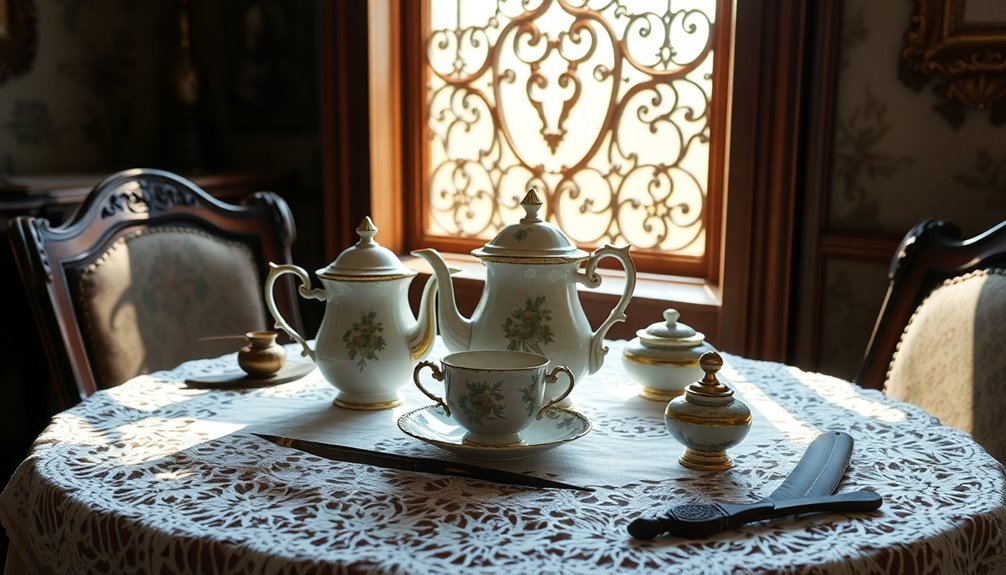
Originating in China, the rich history of tea has woven itself into the fabric of various cultures around the world. For centuries, tea has been more than just a beverage; it's been integral to cultural rituals and practices. As tea spread to Japan, India, and Western societies, it transformed into a symbol of sophistication and social status.
In Colonial America, the British upper-class tradition of tea parties took root, influencing social gatherings and etiquette. These afternoon events became a canvas for socialization, where gentlemen and ladies would connect, converse, and build relationships. Tea served as a medium for meaningful communication, bridging gaps between various classes and cultures.
The evolution of tea practices reflects diverse values and traditions, shaping how tea is consumed and celebrated globally. Each culture has its unique etiquette, highlighting the historical significance of tea as a vital aspect of social life.
Understanding this background enriches your appreciation for tea today. Embracing proper tea etiquette not only honors these historical practices but also enhances your own social interactions, allowing you to partake in the sophistication and warmth that tea has offered throughout the ages.
Cultural Variations in Tea Etiquette
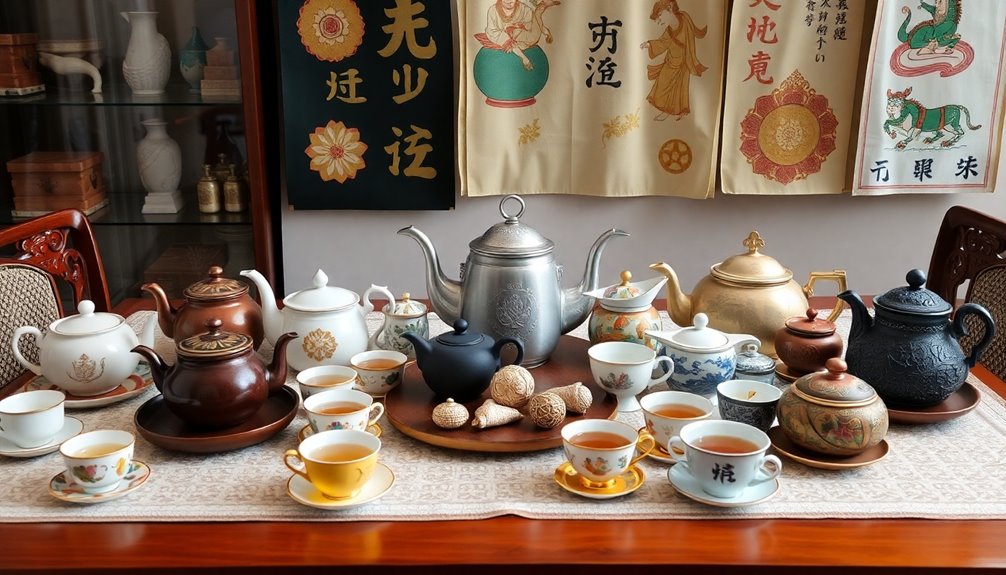
Understanding the historical significance of tea sets the stage for exploring the diverse cultural variations in tea etiquette.
In Britain, the etiquette of afternoon tea is a cherished tradition, where you'll find sandwiches first, followed by scones and pastries set elegantly on the tea table. The order of serving reflects the social structures that shaped this custom.
Conversely, in Japan, the tea ceremony emphasizes mindfulness and aesthetics, showcasing the cultural significance behind each movement and gesture. Here, you're encouraged to appreciate the beauty of the moment.
Meanwhile, in India, chai culture integrates hot tea into daily life, with milk and spices adding warmth to social interactions, reinforcing community bonds.
Chinese tea ceremonies focus on the art of brewing, with elaborate steps that promote harmony and respect among participants.
Each of these practices illustrates how tea etiquette varies significantly across cultures, reflecting unique values and traditions.
Whether you're enjoying a garden tea in a casual Western setting or participating in a formal ceremony, understanding these nuances enhances your appreciation for the ritualistic beauty of tea.
Global Tea Ceremony Traditions

Around the world, you'll find a rich tapestry of tea ceremony traditions that reflect cultural values and social practices. In Japan, the "Chanoyu" emphasizes mindfulness and the spiritual connection between host and guests, featuring intricate rituals.
Meanwhile, in China, the Gongfu tea ceremony showcases the mastery of the tea maker, focusing on the quality of tea leaves through multiple infusions.
In Britain, afternoon teas have become a beloved tradition since the 19th century. Here, you can savor cups of tea like Earl Grey, paired with finger sandwiches, scones slathered in clotted cream, and cream and jam. This delightful spread is often served in tiered stands, enhancing the overall experience.
India's chai culture integrates tea into daily life, offering spiced tea alongside snacks that highlight the country's culinary diversity.
Lastly, the Moroccan tea ceremony is a warm celebration of hospitality, where mint tea is poured from a height to create foam, often accompanied by sweets.
These various tea parties and traditions remind us how tea acts as a social glue, connecting us through shared rituals and flavors across cultures.
Modern Interpretations of Etiquette

As traditional tea ceremonies evolve, modern interpretations of etiquette prioritize inclusivity and personal expression. This shift makes tea gatherings more casual and accessible, especially for younger generations who may find rigid rules off-putting.
You'll notice that today's tea etiquette encourages creativity, allowing you to showcase unique themes and presentations that reflect your personality. Social media plays a significant role in this transformation, inspiring you to share your individual tea experiences while stepping away from conventional norms.
Moreover, awareness of cultural variations in tea practices enriches these modern interpretations. By embracing diverse customs, you foster a more global perspective on tea consumption and socialization.
Despite these changes, the core principles of politeness and consideration for others remain essential. Making an effort to be respectful and attentive during gatherings ensures that everyone feels welcome.
Ultimately, modern tea etiquette isn't just about the tea itself; it's about creating meaningful connections with those around you. By blending tradition with personal touch, you can enjoy tea in a way that feels authentic, inclusive, and respectful, enhancing both the experience and the relationships you build.
Practical Applications

When hosting a tea gathering, applying proper etiquette can significantly enhance the experience for both you and your guests. To start, always send out handwritten invitations and make sure to receive timely responses. This shows respect for the occasion and your guests.
During the gathering, remember the correct sequence of food consumption: first, eat sandwiches, then move on to pastries, and finally, the tier is for sweets. This flow not only reflects good manners but also enhances the tasting experience.
While enjoying your cup of tea, hold your teacup gracefully; avoid raising your pinkie finger, as it's a common misconception. Instead, focus on presenting a more sophisticated image by adhering to this simple guideline.
When serving tea, fill each teacup three-quarters full, and be sure to offer milk or sugar based on your guests' preferences.
These practical applications of tea etiquette foster an atmosphere of respect and refinement, making the gathering enjoyable for everyone involved. By keeping these points in mind, you'll create a memorable tea experience that showcases your attention to detail and hospitality.
Conclusion
In conclusion, understanding proper tea etiquette enriches your tea experience and connects you to a rich tapestry of history and culture. Whether you're hosting a gathering or enjoying a quiet moment alone, these practices reflect respect and mindfulness. By embracing both traditional and modern interpretations, you can make your tea time more meaningful. So, the next time you brew a cup, remember that every sip is an opportunity to honor the art of tea.



